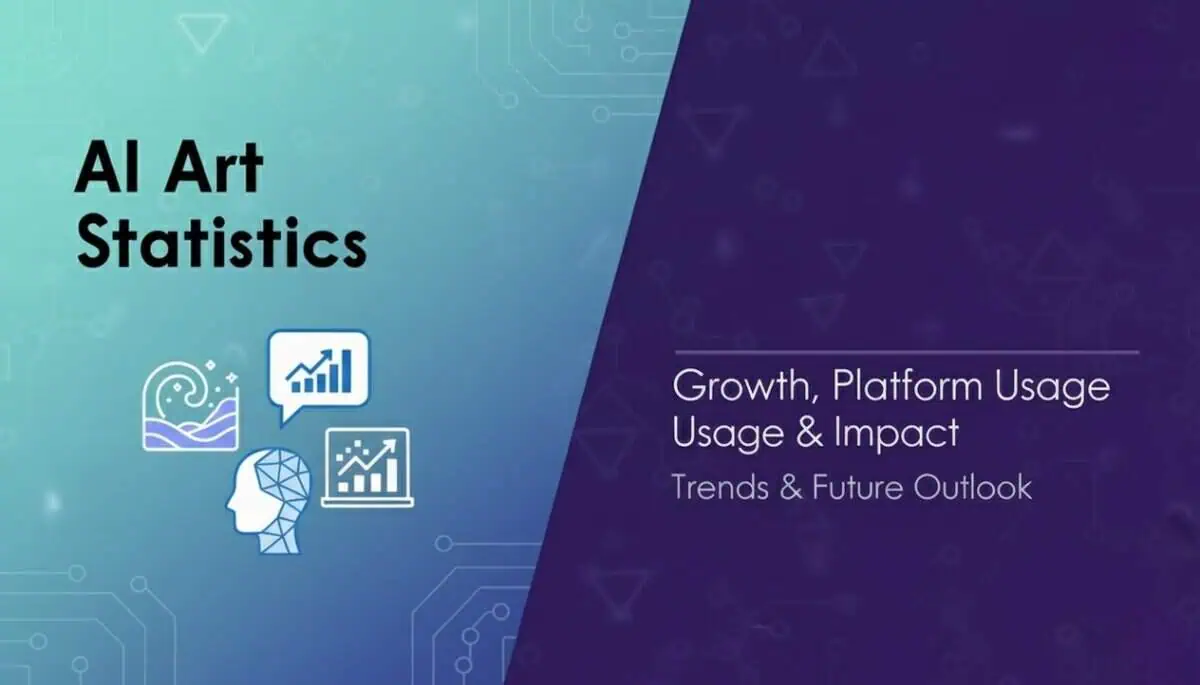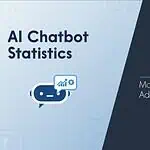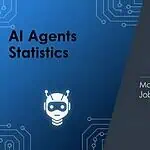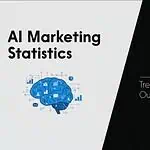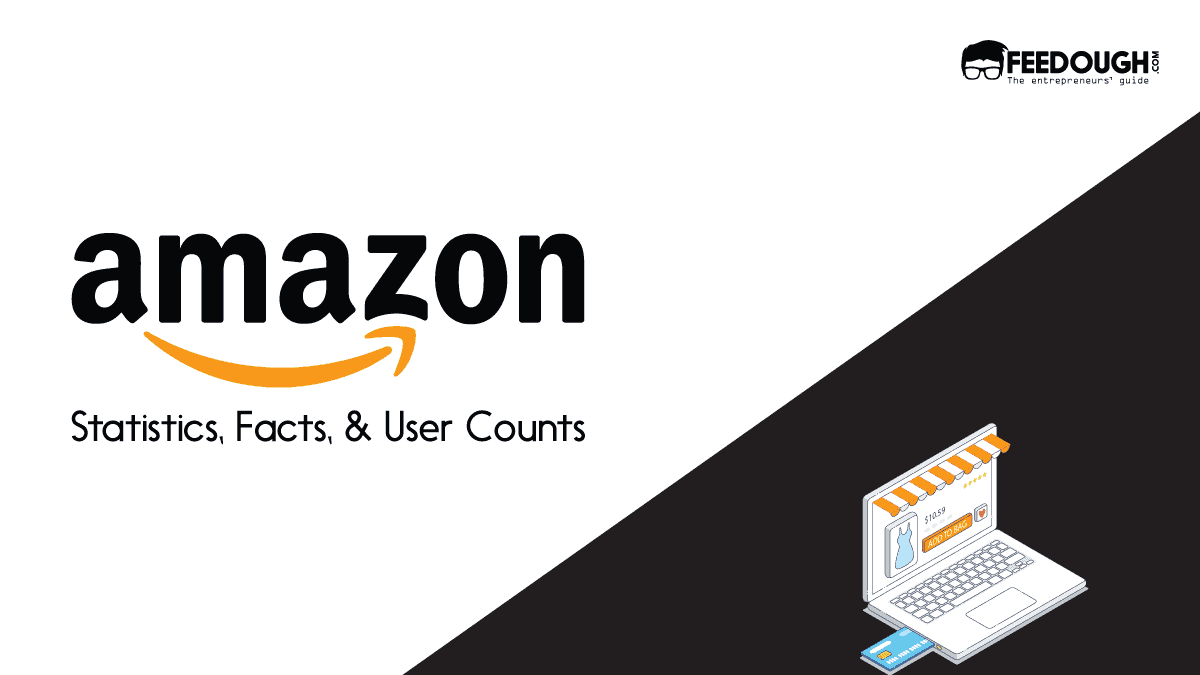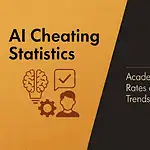Just three years ago, creating professional-quality artwork required years of training, expensive software, and countless hours of practice. Today? You can type a few words and watch AI generate museum-worthy pieces in seconds.
The numbers tell an incredible story. According to recent projections, the global AI image generation market is set to reach $1.3 billion by 2025, growing at a staggering 35.7% annually. Platforms like Midjourney, DALL-E, and Stable Diffusion aren’t just tools anymore; they’re transforming entire creative industries, from advertising agencies to independent artists.
But what do the actual statistics reveal about who’s using these platforms, how they’re being adopted, and what this means for the future of creative work? Let’s dig into the data that’s painting the real picture of AI art’s explosive rise.
Key AI Art Statistics
The numbers paint a clear picture of AI art’s explosive growth. Here are the most important statistics that show just how quickly this technology is transforming the creative landscape:
- The global AI image generation market projected to reach $1.3 billion by 2025 with a compound annual growth rate (CAGR) of 35.7% (SuperAGI, 2025)
- AI-powered design tools market expected to hit $4.4 billion by 2025, growing at a 34.8% CAGR (Grand View Research, 2025)
- AI creativity and art generation market growing at 26% CAGR, indicating sustained momentum in the creative AI space (Market.us, 2025)
- Midjourney has over 21 million registered users on its Discord server as of 2025, up from 19.26 million in 2024 (DemandSage, 2025)
- Visual art represents over 50% of the total AI creative market, making it the dominant category in AI-generated content (God of Prompt, 2025)
- Over 35% of fine art auctions now feature AI-generated pieces, showing mainstream acceptance in traditional art markets (Artsmart.ai, 2025)
- 24% of promotional suppliers use AI for artwork creation, demonstrating significant adoption in commercial applications (ASI, 2025)
- People can identify AI-generated art with 98% accuracy, indicating high consumer awareness of AI content (SCIRP, 2025)
These statistics reveal more than just impressive growth rates. They show AI art moving from experimental technology to an essential creative tool. What’s particularly striking is how quickly platforms like Midjourney have built massive user bases while traditional art markets embrace AI-generated pieces.
Market Size and Growth Statistics
The numbers tell a compelling story about where AI art is heading:
- The global AI creativity and art generation market growing at 26% CAGR through 2030
- AI image generation specifically hitting $1.3 billion by 2025 with 35.7% CAGR
- AI-powered design tools reaching $4.4 billion by 2025 at 34.8% CAGR
- Visual art commanding over 50% of the entire AI creative market

What’s fascinating here is how visual creation outpaces almost everything else in the AI space. According to Market.us research, that 26% compound annual growth rate puts AI art ahead of many traditional tech sectors. The reason? Visual content creation hits a sweet spot. It’s immediately useful, doesn’t require technical expertise, and produces results people can actually see and share.
The split between image generation and design tools also reveals something interesting. Design tools show slightly lower growth rates because they’re competing with established players like Adobe. But pure image generation? That’s essentially creating a brand-new market from scratch, which explains the explosive 35.7% growth rate.
Platform Usage and User Statistics
When you look at the numbers, Midjourney clearly dominates the AI art space. The platform has grown from 19.26 million Discord users in 2024 to over 21 million by 2025, making it the go-to choice for AI image generation.
Here’s what makes these numbers interesting:
- Monthly engagement: 3-4 million website visitors hit Midjourney’s site each month
- Active participation: 7.5% of users stay actively engaged. That’s roughly 1.1 million people creating at any given time
- User makeup: 65% are Millennials and Gen Z, while only 3.46% are over 65
- Professional usage: The user base spans tech professionals, designers, and marketers

What strikes you about these stats is the engagement rate. Most platforms struggle to keep users active, but Midjourney’s 7.5% active user rate shows people aren’t just signing up; they’re actually using it. The demographic split also tells a story: younger users are driving adoption, likely because they’re more comfortable with AI tools and see the creative potential.
While competitors like DALL-E and Stable Diffusion compete for market share, Midjourney’s Discord-based approach seems to be working. The community aspect keeps users engaged longer than traditional software interfaces.
Industry Adoption and Business Integration
The numbers tell a clear story: businesses aren’t just experimenting with AI art. They’re making it part of their core operations. Here’s what the data shows about real-world adoption:
- 24% of promotional suppliers use AI for artwork generation
- 19% of promotional distributors integrate AI into their design workflows
- AI artwork generation ranks as the 2nd most common use case for suppliers
- For distributors, it’s the 3rd most popular AI application
- Over 35% of fine art auctions now feature AI-generated pieces
What’s driving this adoption? Speed and efficiency. Companies are discovering that AI art tools don’t replace creativity; they accelerate it. You can generate mock-ups in minutes instead of hours, explore design concepts during brainstorming sessions, and iterate faster than ever before.
The traditional art market is taking notice too. When more than a third of fine art auctions include AI-generated pieces, it signals a fundamental shift in how the industry values and categorizes creative work.
Consumer Awareness and Detection Statistics
Here’s something that might surprise creators banking on AI art flying under the radar: consumers are remarkably good at spotting it. Recent research from SCIRP shows people can identify AI-generated art with 98% accuracy. That’s not luck; that’s genuine detection skill.
This high accuracy rate reveals several key implications:
- Consumers have developed sophisticated visual literacy around AI art characteristics
- Attempts to pass AI work as human-created face significant detection risks
- Transparency becomes less of a choice and more of a necessity
- Art markets must grapple with authenticity verification processes
What this means for the industry is pretty clear. The days of AI art existing in a grey area of consumer awareness are ending fast. Instead of trying to fool viewers, creators and platforms are finding success through honest disclosure and focusing on AI art’s unique strengths rather than mimicking human work.
Regional Market Distribution
The AI art market shows distinct geographic patterns that reveal how different regions approach creative technology adoption.
North America and Europe stand as mature markets with well-established innovation frameworks. These regions benefit from strong tech infrastructure and early adoption cultures that embrace AI-powered creative tools. You’ll find robust ecosystems here where artists, developers, and businesses collaborate more readily.
Meanwhile, Asia-Pacific continues its trajectory as a high-growth region. The area’s rapid digital transformation and tech-forward population create fertile ground for AI art adoption.
The global landscape spans seven key regions: Asia-Pacific, Western Europe, Eastern Europe, North America, South America, the Middle East, and Africa. Each brings unique characteristics to the market.
What’s interesting is how market maturity doesn’t just depend on technology access. Cultural attitudes toward AI creativity, regulatory environments, and local artist communities all shape how these tools gain traction in different parts of the world.

What These Numbers Reveal
The numbers paint a clear picture: AI art isn’t just emerging; it’s exploding. With the market racing toward $1.3 billion by 2025 at a 35.7% annual growth rate, platforms like Midjourney are building 21-million-strong user bases, and nearly a quarter of businesses are already integrating AI into their creative workflows.
We’re witnessing one of the fastest technology adoptions in recent history. What’s particularly striking is how aware consumers have become. 98% can spot AI-generated content, yet adoption continues to surge.
This contradiction reveals something important: people aren’t being fooled by AI art; they’re choosing it. The geographic patterns show mature markets like North America leading adoption while emerging regions prepare for rapid growth. For creators and businesses, these statistics suggest a fundamental shift rather than a passing trend. The question isn’t whether AI art will reshape creative industries; it’s how quickly you’ll adapt to the transformation already underway.
A startup consultant, digital marketer, traveller, and philomath. Aashish has worked with over 20 startups and successfully helped them ideate, raise money, and succeed. When not working, he can be found hiking, camping, and stargazing.
